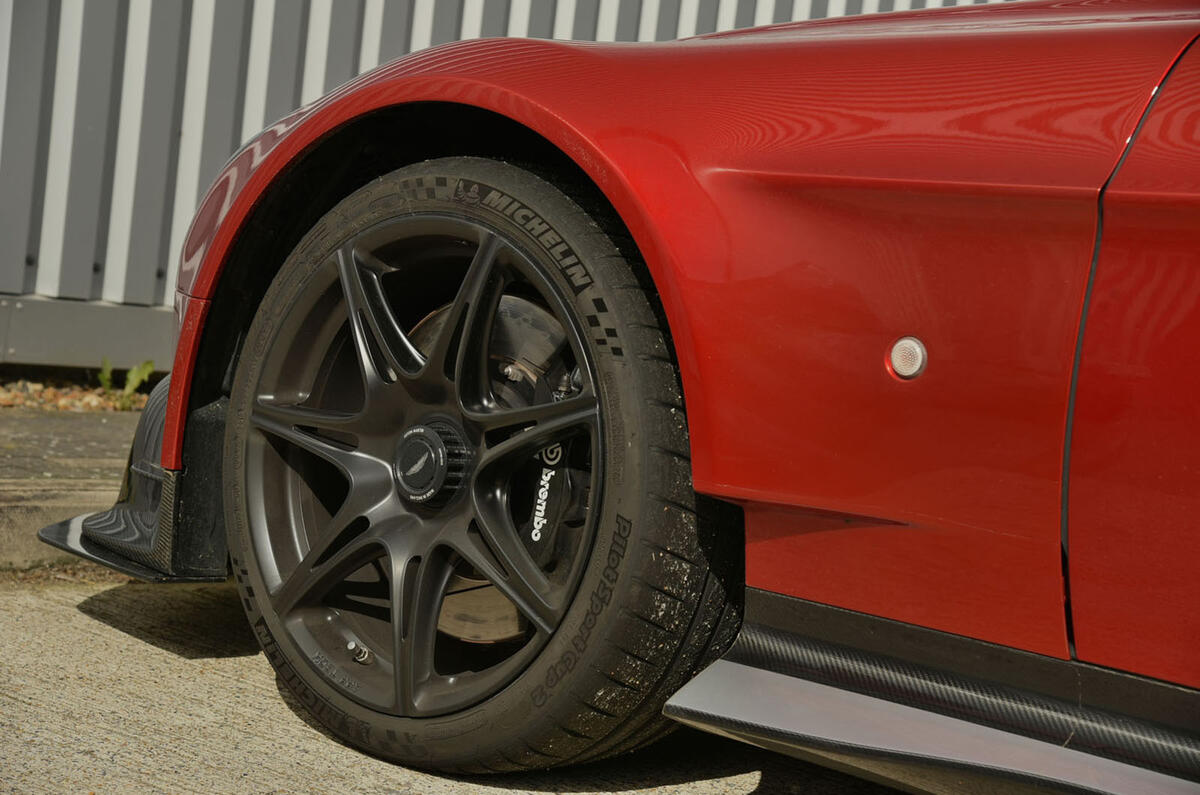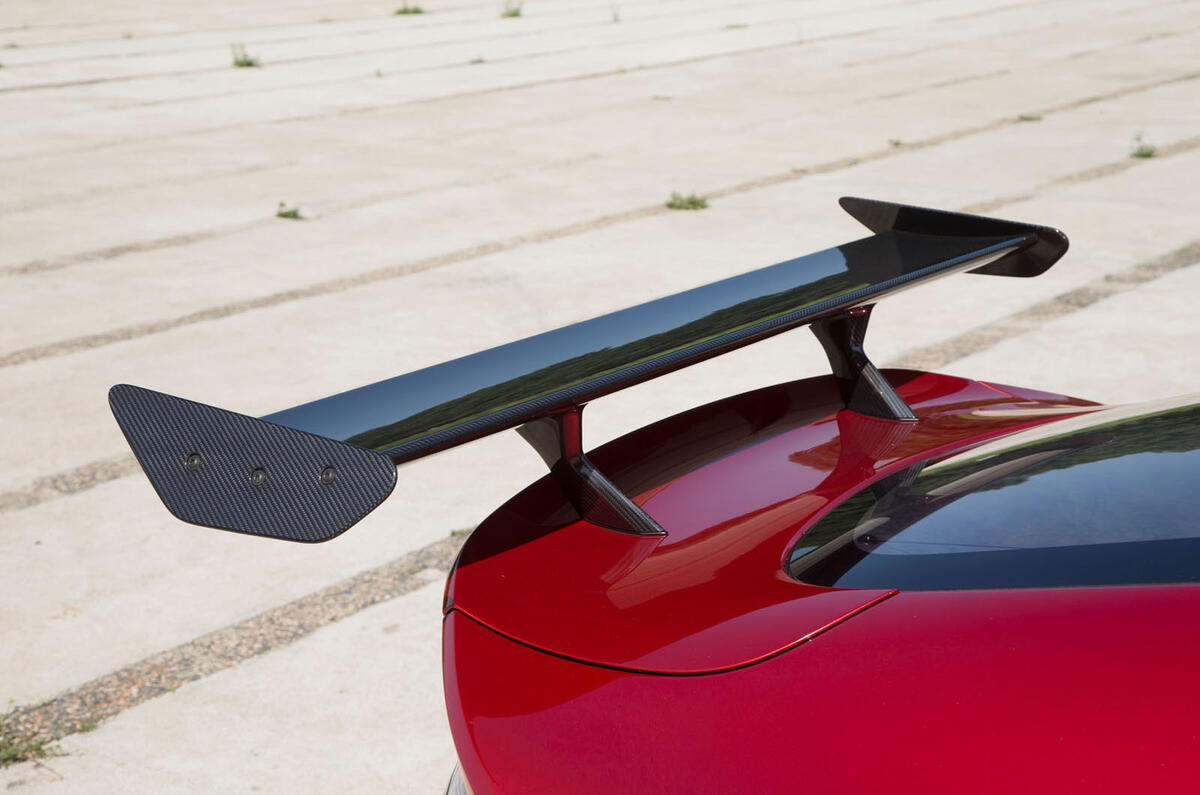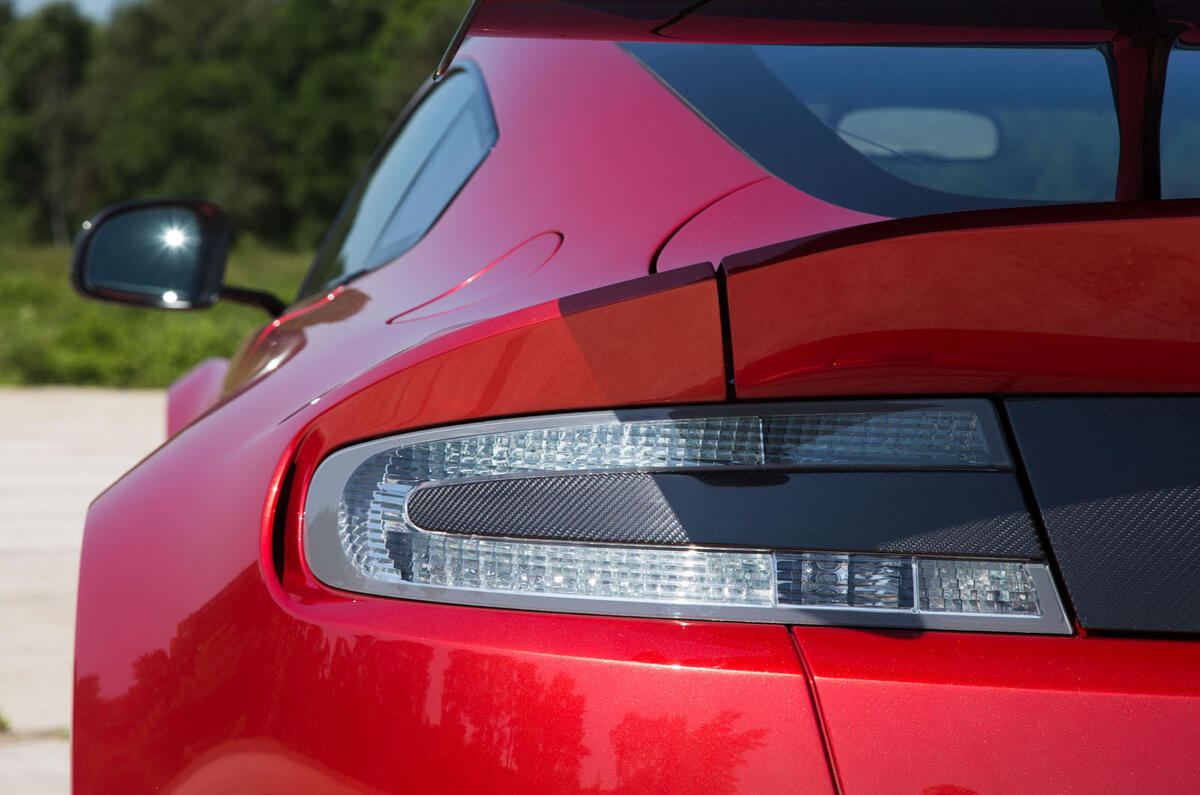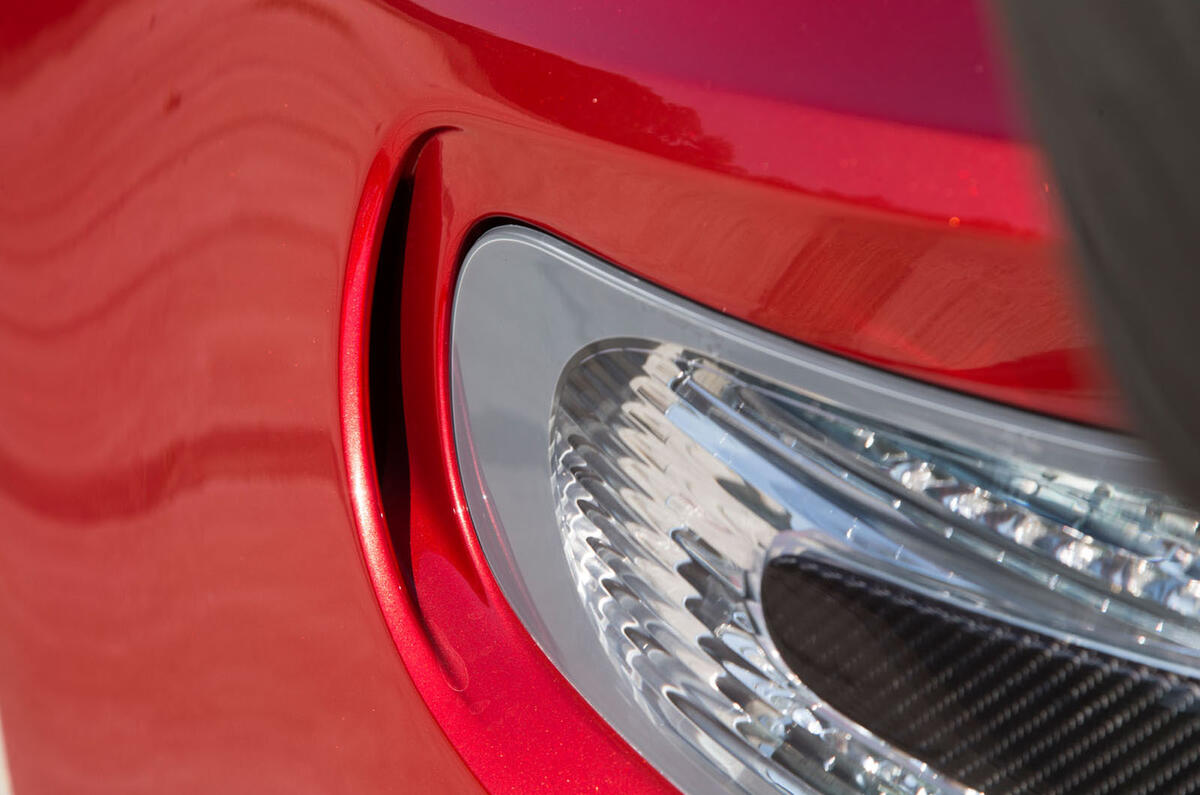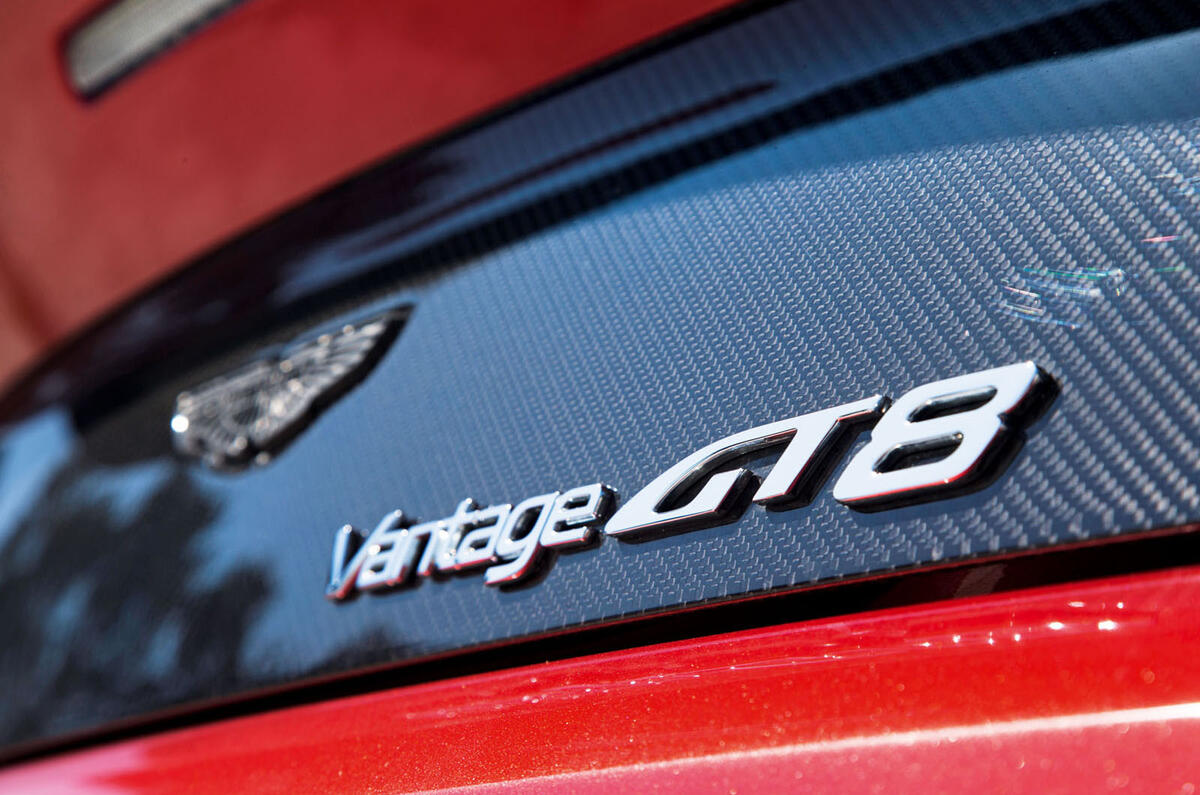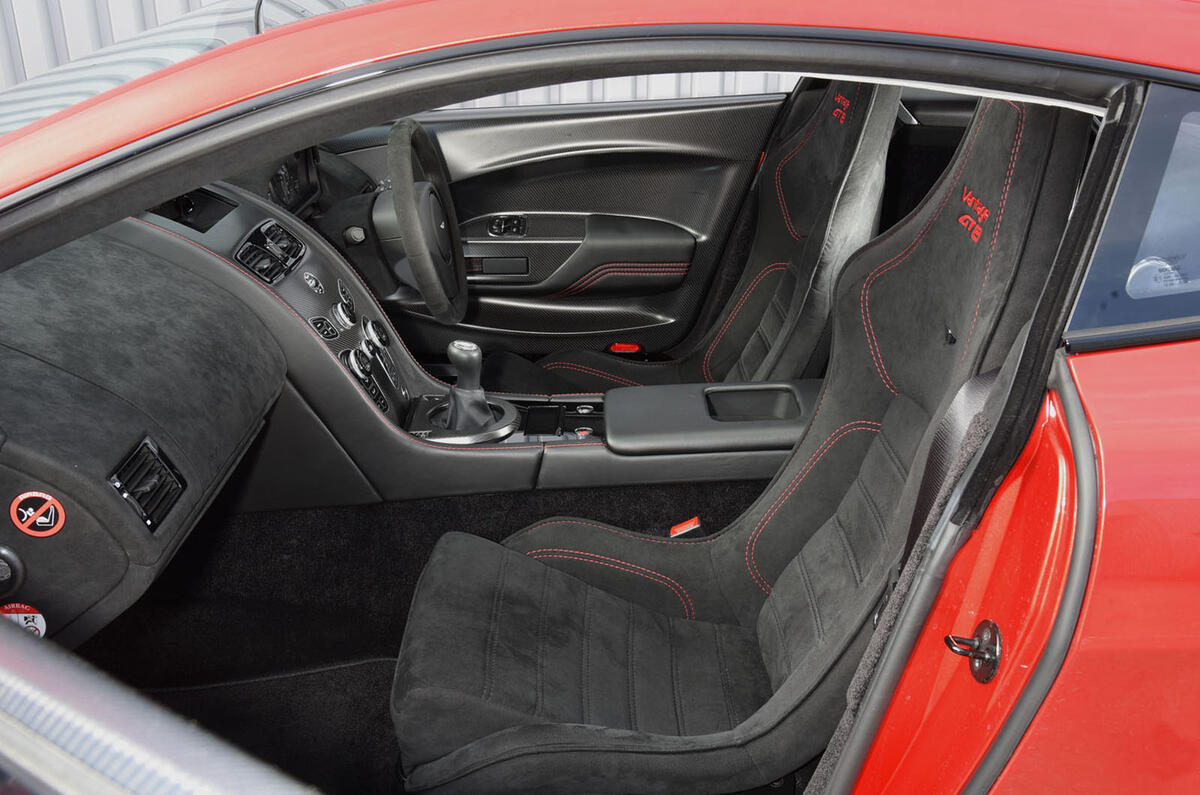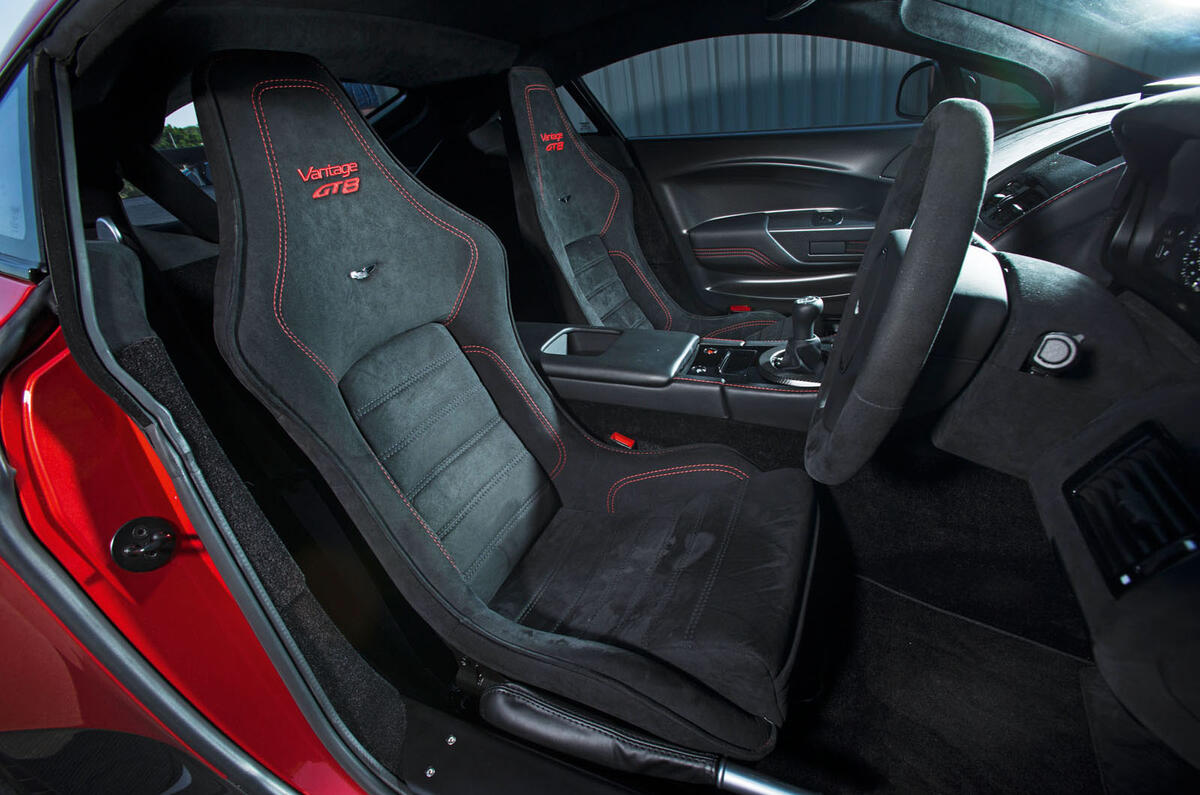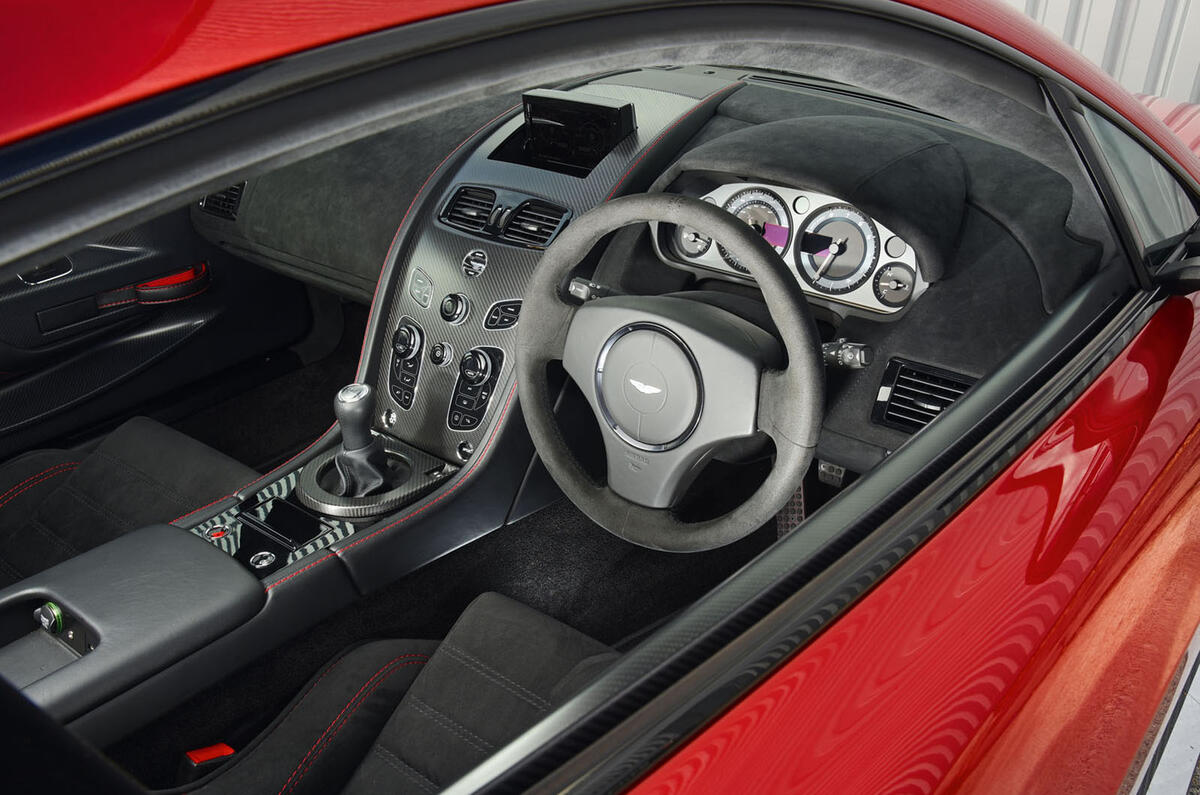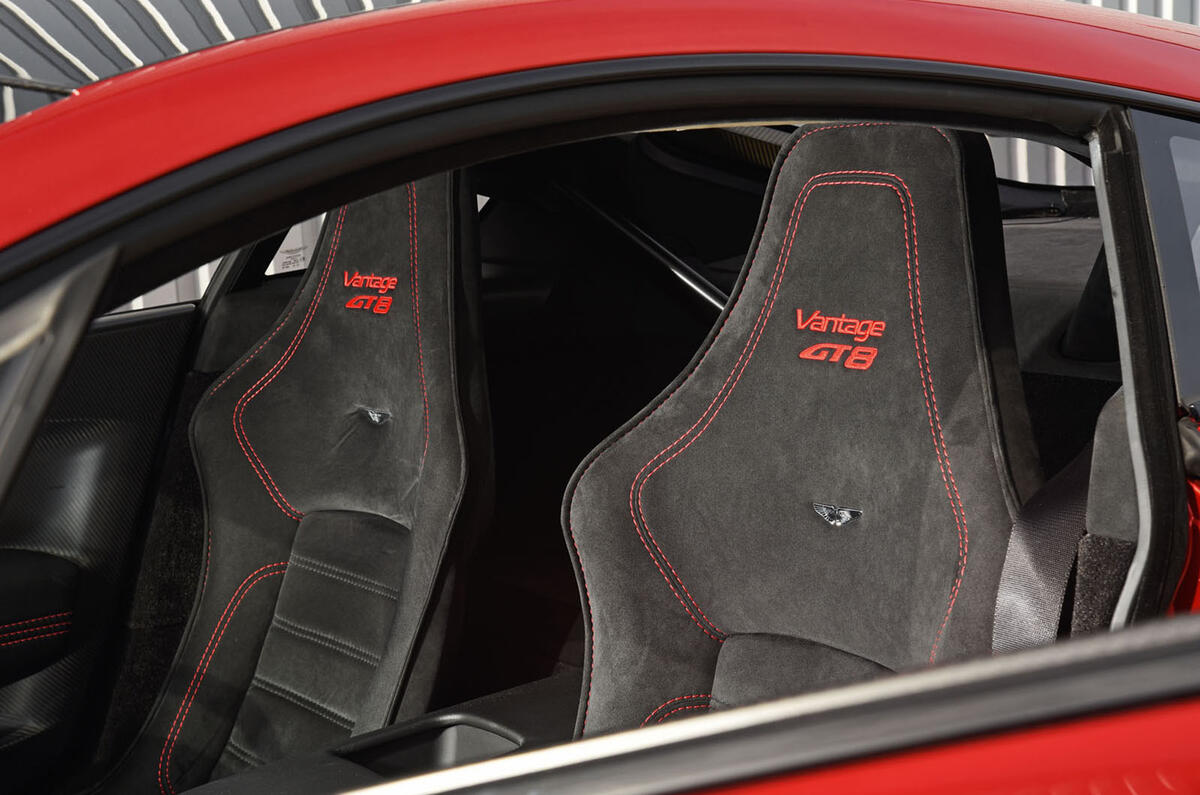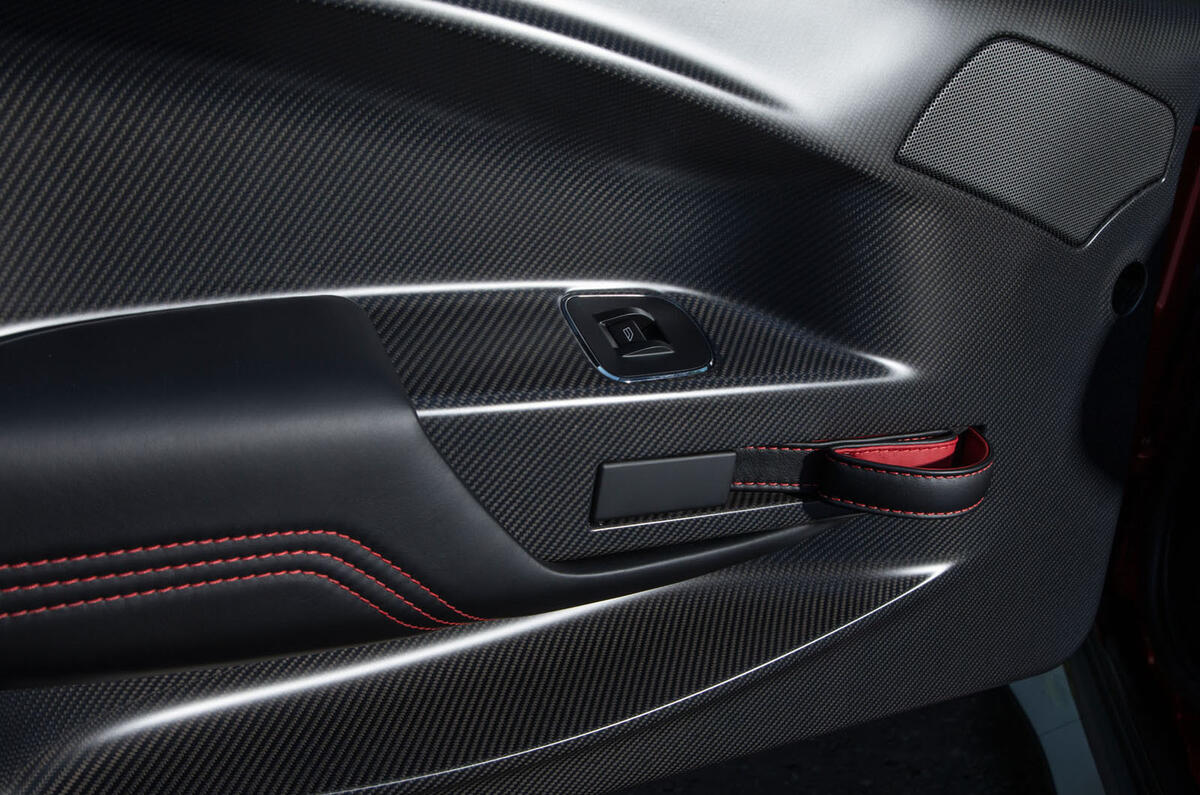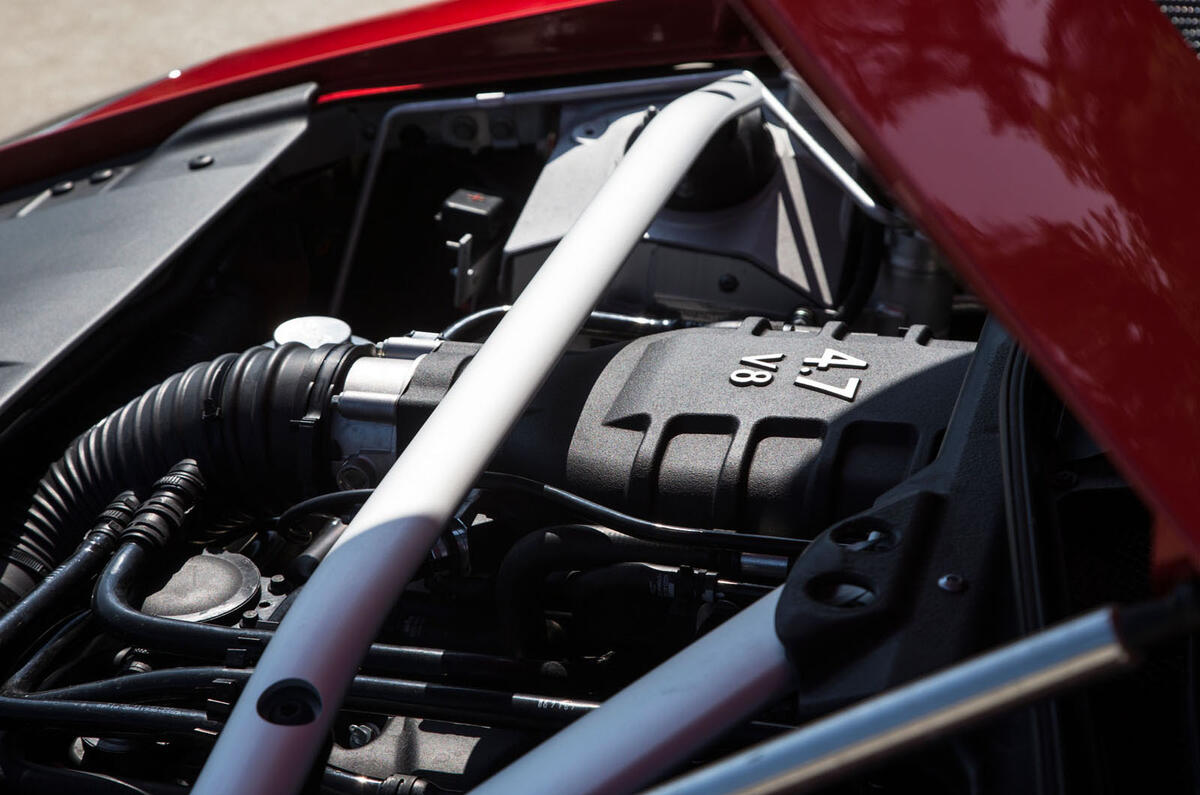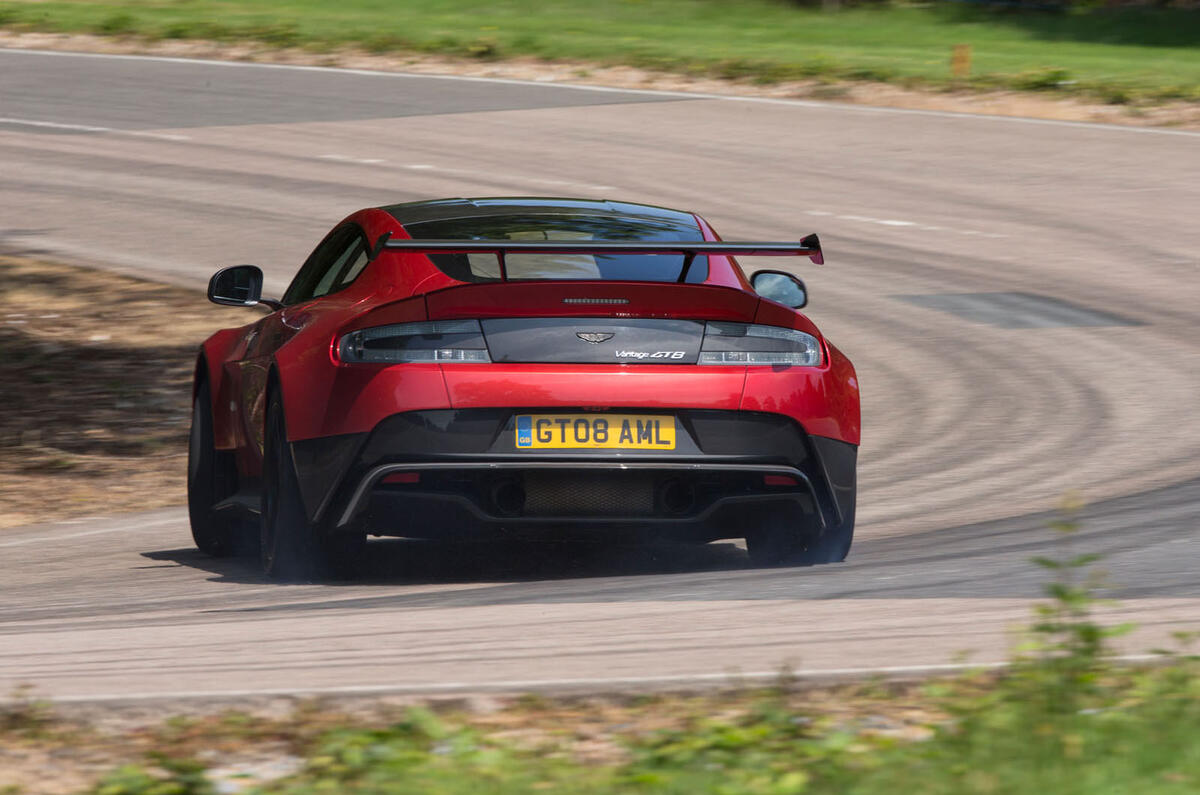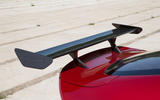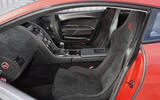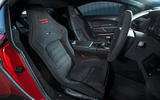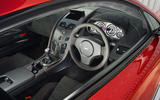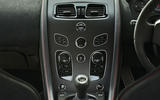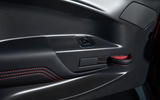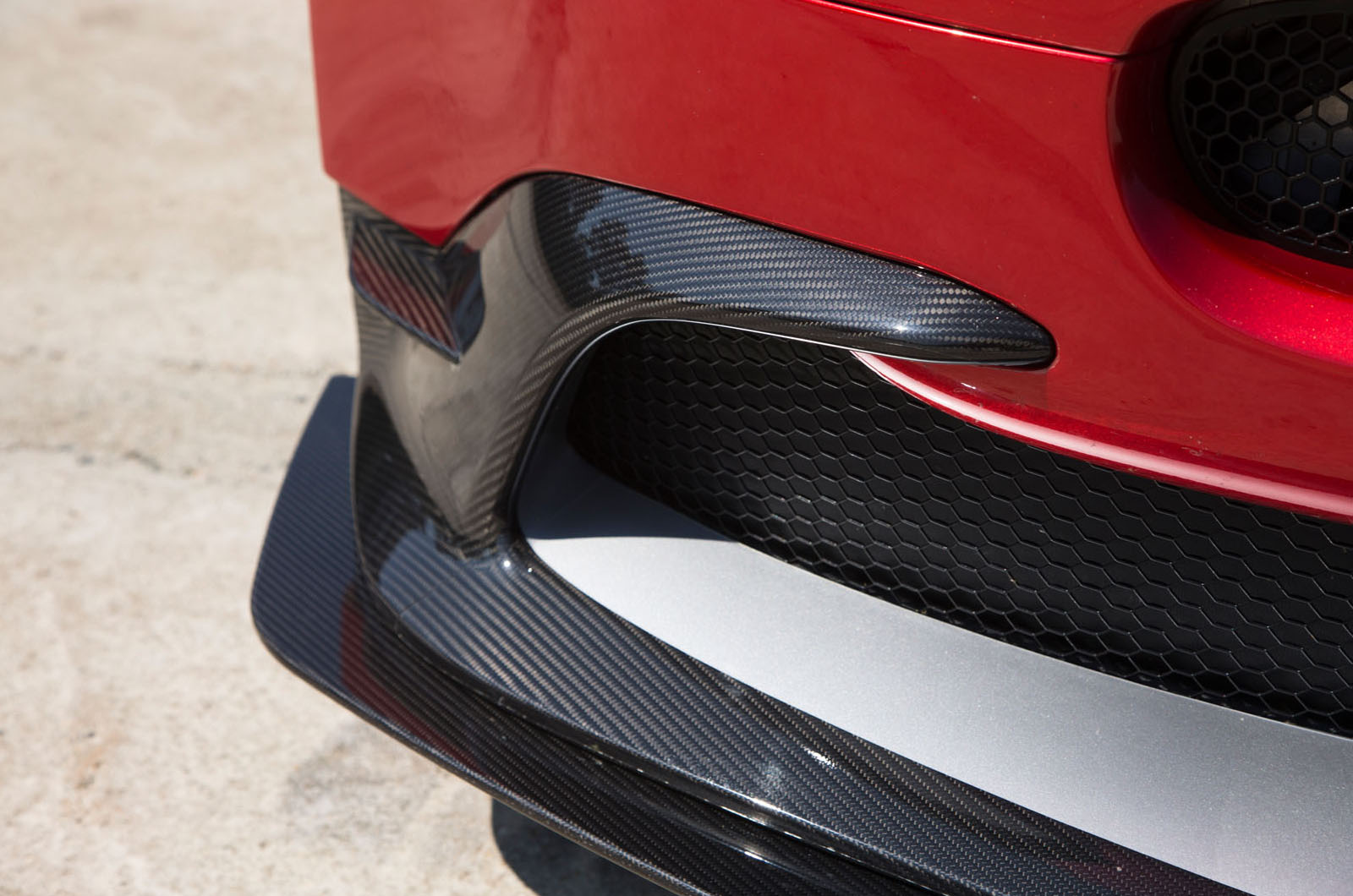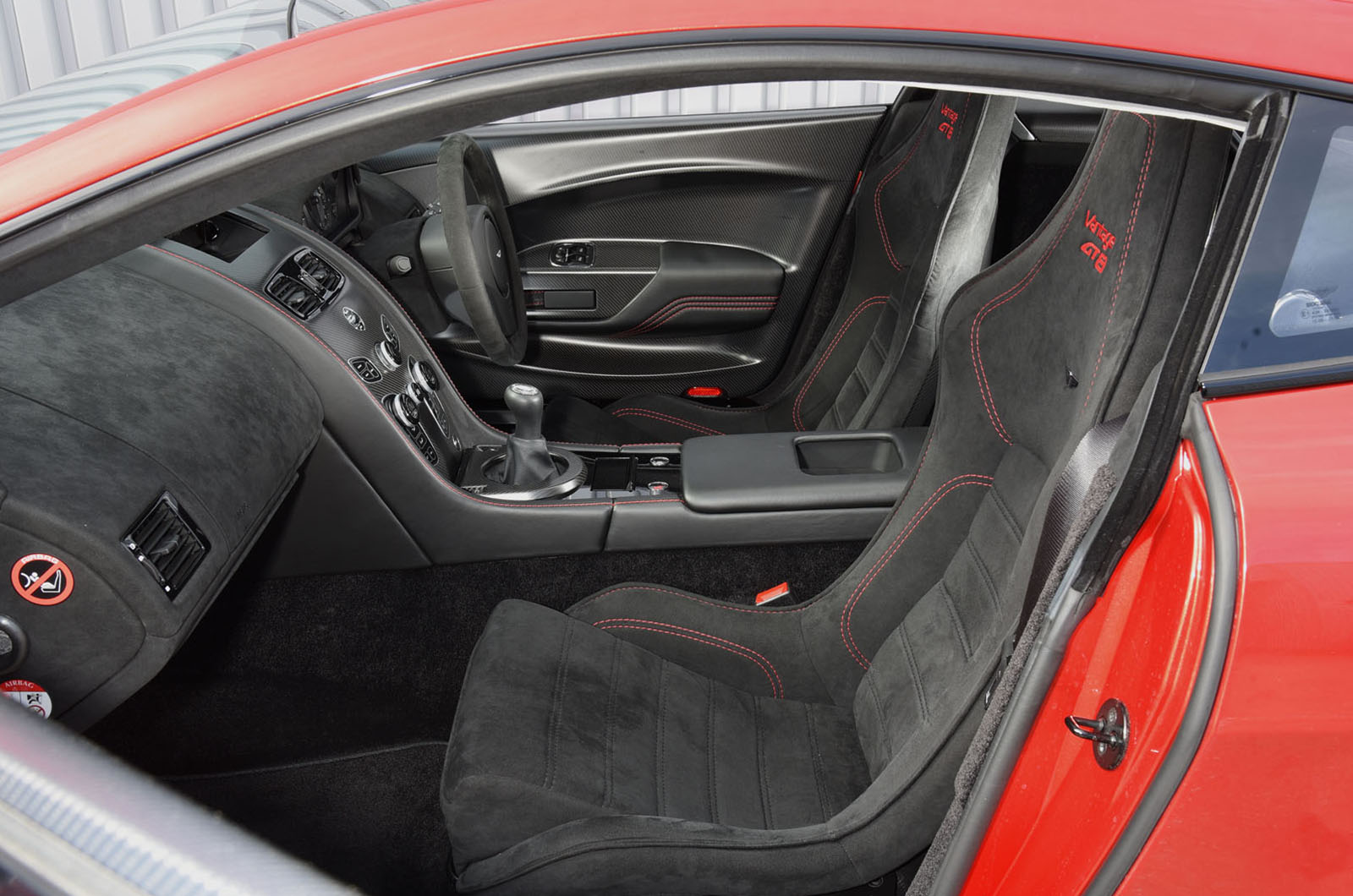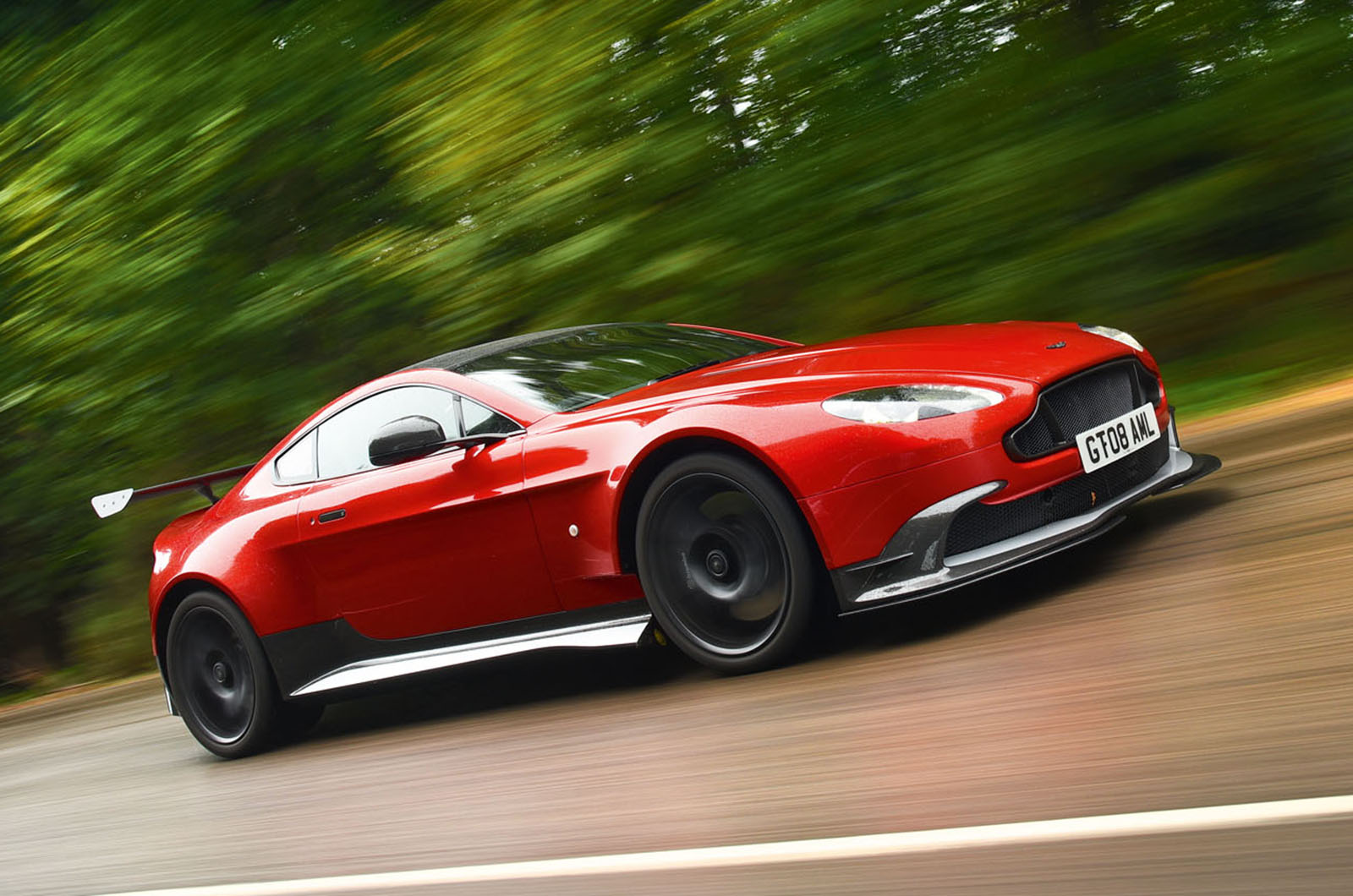The GT8’s carbonfibre door handle unlatches a driver’s door that feels much lighter, as you swing it open, than Aston Martin Vantage regulars will be used to.
All is explained when you see the beautiful carbonfibre panel covering the door’s inner side, which accommodates a small speaker grille, simplified leather handle, anodised aluminium latch release, electric window switch, attractively trimmed leather elbow rest and nothing else.
The fixed-backrest carbonfibre bucket seats are ostensibly the same as those of the GT12, but this time they’re upholstered in Alcantara rather than leather.
They’re comfortable despite the absence of backrest adjustment and place you in front of a fascia trimmed in acres of matching suede, from steering rim to instrument binnacle and beyond.
The Vantage’s manually adjusted steering column feels slightly unwilling as you move it and it doesn’t quite have enough upwards rake travel to suit taller drivers, but otherwise the driving position is sound.
Space isn’t exactly generous; if you’re taller than 6ft 3in, expect to struggle to sit comfortably with a helmet on.
After the Aston Martin DB11’s daring but contrived instrument cluster, the GT8’s wraps you up like a comforting duvet. An analogue speedo and separate tacho dial are fine departure points for any driver’s car.
In the GT8, the analogue speedo has small labelling that’s a bit difficult to read, but the digital speedo compensates for the shortcoming nicely. The anti-clockwise rev counter somehow remains novel more than a decade after we first saw one on a Vantage.
The GT8 is not offered by Aston with a half-cage or safety harnesses – primarily because Aston Martin the Vantage’s body structure makes it almost impossible to accommodate a half-cage. Disappointing, perhaps, but hardly likely to present a problem given that this is a track-day car and not intended for competition.
The GT8 gets a rotating dash-top display and a small number of key buttons around a rotary dial — just like any good infotainment system.
But AMi III system’s similarities with the best systems end there, which is why Aston Martin has adopted a Mercedes-Benz system for the DB11.
The Vantage’s remains among the more hopeless on sale. It’s clunky and quite difficult to navigate. It does get DAB radio, though, as well as a USB phone interface and Bluetooth audio streaming.
With 160W, the sound system is able to outdo the road/engine noise but, truth be told, it’s no hardship to concentrate on the mechanical sound and leave the top screen nestled into the dash top.
The most useful feature that the system has, in fact, is a screen displaying live tyre pressures at a scale you can read at a glance.




